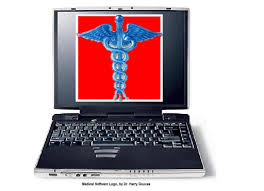Computer Provider Order Entry: Saving Lives and Money Part 1
 Legal nurse consultants increasingly receive electronic health records (EHRs) for analysis. How do EHRs save money and lives? What specifically are the advantages of computer provider order entry?
Legal nurse consultants increasingly receive electronic health records (EHRs) for analysis. How do EHRs save money and lives? What specifically are the advantages of computer provider order entry?
1. Computer provider order entry saves money
Having a provider (physician, nurse practitioner or physicians assistant use a computer to enter medication orders saves money. Drug-related errors in hospitals that could have been prevented are numbered at 400,000 per year. These are the errors that generated $3.5 billion in unnecessary healthcare costs. Preventable medication errors for patients in long-term care settings occur at a rate of 800,000. This costs $887 million dollars.
Implementation of Computer Provider Order Entry to transmit medication orders reduces the error rate of medication administration. Studies have calculated a 55%-86% decrease in serious medication errors. And adverse drug events decrease by 84% with CPOE functionality.
No one can assign a dollar figure to the death of a loved one. We can save between 417 and $29 billion dollars a year. Look at these expenses: costs of care, reduced income, decreased household productivity and disability associated with treating medical errors. Other losses include
- decreased confidence in America’s healthcare system
- loss of satisfaction with health care by patients and providers
- physical discomfort
- increased hospital stays for patients suffering from the medical error
- Lower morale for healthcare providers
- lower school attendance rates
- decreased health status of the population
2. EHRs reduce medication errors
According to a 2006 report, medication errors are the most prevalent type of preventable mistakes. Approximately 1.5 million people suffer adverse reactions each year, resulting in at least $3.5 billion being spent to care for the patients suffering from these errors. The study also showed that each hospital patient suffered at least one medication error per day during an inpatient stay.
Handwritten prescriptions are related to the high volume of errors due to illegible hand writing and incorrect dosage information. We can decrease medication errors with the use of computer provider order entry technology. It is important to use this to prescribe medications and with other software applications.
3. EHRs allow providers to share information and save money
Potential savings to healthcare organizations implementing an EHR: we could save billions each year. How do we do this? We would share healthcare information was electronically between providers and healthcare organizations using a standard format.
A study completed by the RAND Corporation took the cost-savings model further and calculated the annual net value of a fully functional EHR system using a 15 year phased implementation approach. A net value of $113.9-$220.9 billion could be saved nationally after deducting the approximate cost of $7.6 billion for system implementations. Savings associated were categorized as efficiency at $77 billion, safety at $4.5 billion, and chronic disease management at $40-$147 billion.
Read part 2 for more thoughts on how EHRs save money.
Modified from Mila Carlson, PhD, RN CLNC, CNLCP Adoption Rates and Barriers to Implementation of Electronic Health Records in Physician Office Practices In Northwestern Illinois, Dissertation Presented to the Faculty of the School of Health and Public Administration, Warren National University.
Pat Iyer MSN RN LNCC is president of The Pat Iyer Group. Learn more about the pros and cons of electronic health records during our new webinar: Electronic health Records: Are They Safe? Pat is past president of the American Association of Legal Nurse Consultants.
What do you think? Do you favor handwritten records or EHRs? Write a comment below.
